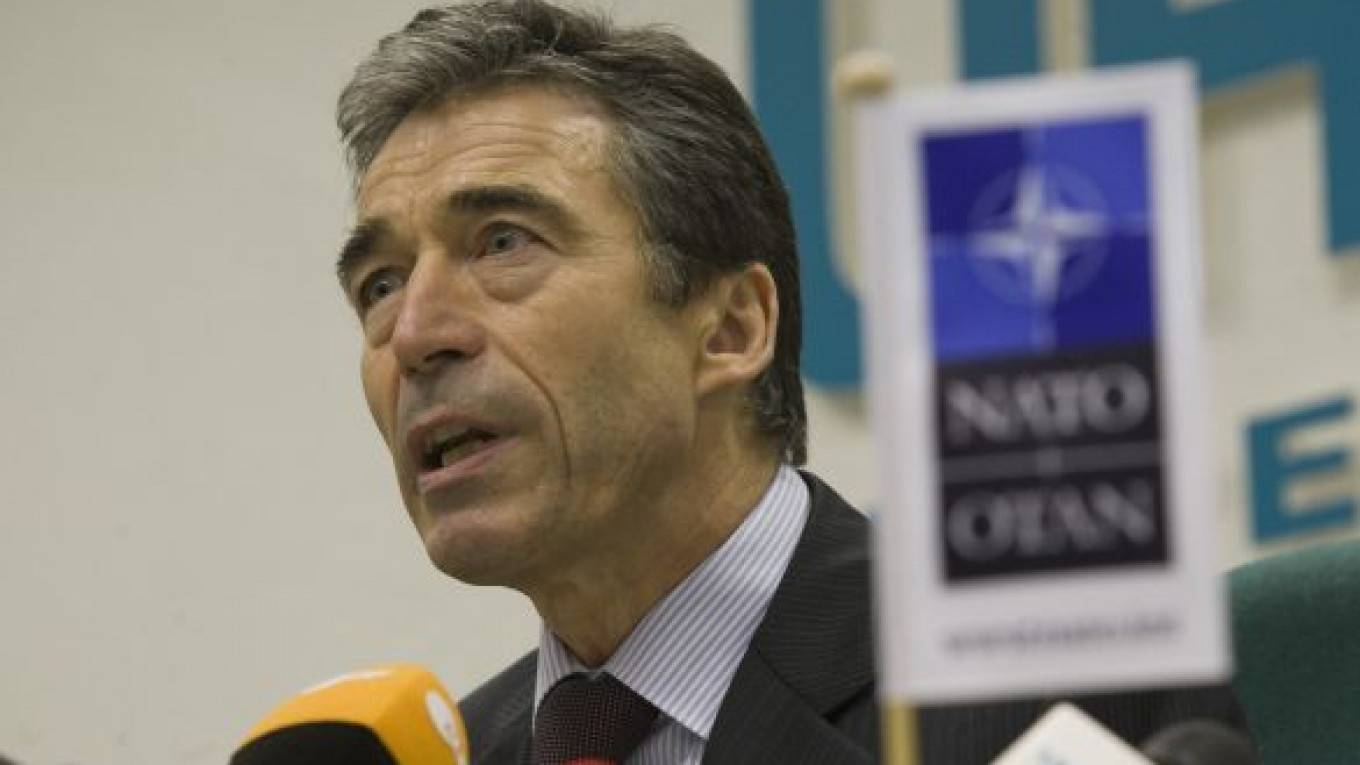BRUSSELS — NATO's top official on Monday defended the alliance's plan for a shield against ballistic missiles in Europe, insisting that the system is on track despite two U.S. reports that describe it as over budget and plagued by technical problems.
Secretary-General Anders Fogh Rasmussen said in an interview that the military alliance plans to announce its initial operational capacity at its summit in Chicago this month and that tests of the missile defense system show that it is working.
"This will make it possible to protect parts of NATO territory, and that concept will be further developed in the coming years so that we will gradually be able to protect all the populations in European NATO countries," Rasmussen said.
"As far as NATO is concerned, we have tested the systems and they work."
Reports by the Defense Science Board, an advisory group to the U.S. Defense Department, and the U.S. Congress' Government Accountability Office, indicated that the system is plagued by technological problems, delays and cost overruns. The reports say missile interceptors are running into production glitches, radars are underpowered and sensors cannot distinguish between warheads and other objects.
Rasmussen declined to discuss specifics, saying he had not seen the reports.
"I think that's a U.S. question," he said.
Missile defense in Europe has been a nettlesome issue since the middle of last decade, when President George W. Bush announced plans to base long-range interceptors in Central Europe as a defense against missiles from Iran. That infuriated Russia, which believed the program would undermine its nuclear deterrent.
Soon after Obama took office in 2009, he revamped the program with a plan calling for slower interceptors that would be upgraded gradually over four phases, culminating with the newest versions in 2020.
The early phases call for using Aegis radars on ships and a more powerful radar based in Turkey. Later phases call for moving Aegis radars to Romania and Poland.
NATO says the future ballistic missile defense system passed a significant technical test on April 4 and 5 during a series of simulated engagements. In another April test, a similar theater missile defense system tested jointly with Russia also performed well, it says.
Critics have dismissed the missile shield as an expensive "make-work project" designed to provide the 63-year-old alliance with a raison d'etre after it winds down its presence in Afghanistan.
Rasmussen said leaders would discuss ending the alliance's combat operations in Afghanistan by the end of 2014, while remaining committed to the training mission after that. He said he was confident that the international community — not just the United States, NATO and other partner nations engaged in the war — would commit itself to help finance Afghan security forces after 2014.
A Message from The Moscow Times:
Dear readers,
We are facing unprecedented challenges. Russia's Prosecutor General's Office has designated The Moscow Times as an "undesirable" organization, criminalizing our work and putting our staff at risk of prosecution. This follows our earlier unjust labeling as a "foreign agent."
These actions are direct attempts to silence independent journalism in Russia. The authorities claim our work "discredits the decisions of the Russian leadership." We see things differently: we strive to provide accurate, unbiased reporting on Russia.
We, the journalists of The Moscow Times, refuse to be silenced. But to continue our work, we need your help.
Your support, no matter how small, makes a world of difference. If you can, please support us monthly starting from just $2. It's quick to set up, and every contribution makes a significant impact.
By supporting The Moscow Times, you're defending open, independent journalism in the face of repression. Thank you for standing with us.
Remind me later.






